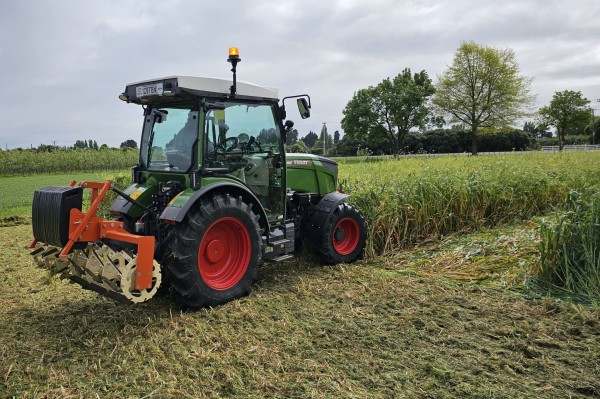Cover crops!
Added one year ago
By Alex Dickson

Over the last two years we have been learning about the place of cover crops in intensive vegetable production as part of our Carbon Positive project.
A key lesson for all involved, particularly for our Regenerative treatment, has been that cover crops are almost as important as our main crop. What we grow over the winter, how we terminate our cover crop, and when we terminate are all factors that play a critical role in the success of our summer crops.

We have spent a lot of time exploring how we apply the regenerative principle of 'minimise soil disturbance' to intensive process vegetable production. This includes minimising mechanical interventions like cultivation, and minimising the use of agri-chemicals, like herbicides.
One option to minimise soil disturbance ahead of planting summer crops is using a Roller Crimper. This implement pushes the cover crop over and crimps/crushes the plant stem every 6 inches. This stresses the plant, causing the plant to die. In theory, you can then direct drill into the crimped cover crop= no herbicide + no cultivation.
For this to work, the plant needs to be at a particular stage of maturity, for black oats its anthesis, for tic beans its flowering. Roller crimping tends to work best on singe species cover crops, at a push two species mixes (if the timing is right).

One limitation we have is that we can't predict the future. It is hard to know the exact moment the cover crop will be at the right stage of maturity, as this will be determined by a range of factors we can't control i.e., the weather! When we have a planting schedule dictated by a hungry factory, we don't have the luxury of waiting extra days or weeks for the plants to mature.
Only one way to find out though!
Over winter, outside of our trial area, we grew a range of different cover crops so we could have a play with a roller crimper.
We grew:
- A diverse 7 species regen mix (black oats, tillage radish, sunflowers, buckwheat, crimson and Persian clover and hairy vetch).
- Rye corn
- Tic beans
- Tic beans + rye corn

This week we hosted a field day at the LandWISE MicroFarm so folks could come and see the roller crimper in action! Our friends at TRS Hastings (a big thanks to Dave Forward) demonstrated their Braun 1.8m roller crimper. Over the coming weeks we will monitor the success of the rolling, and use this information to inform how we manage next years cover crops.
Join the conversation
Be the first to leave a comment.
Leave a comment
All comments are reviewed before they are published on the website. Your email address will not be published.



Community Engagement and Knowledge Sharing Strengthen the Carbon Positive Project


Farewell to Trustee Phil Schofield – A Foundational Leader of the HBFFCT

